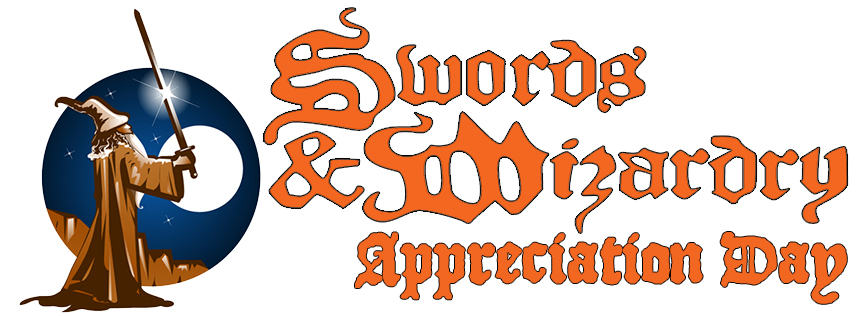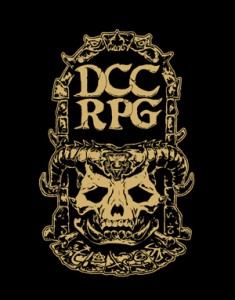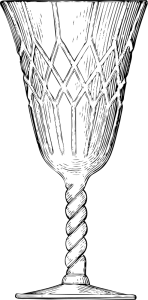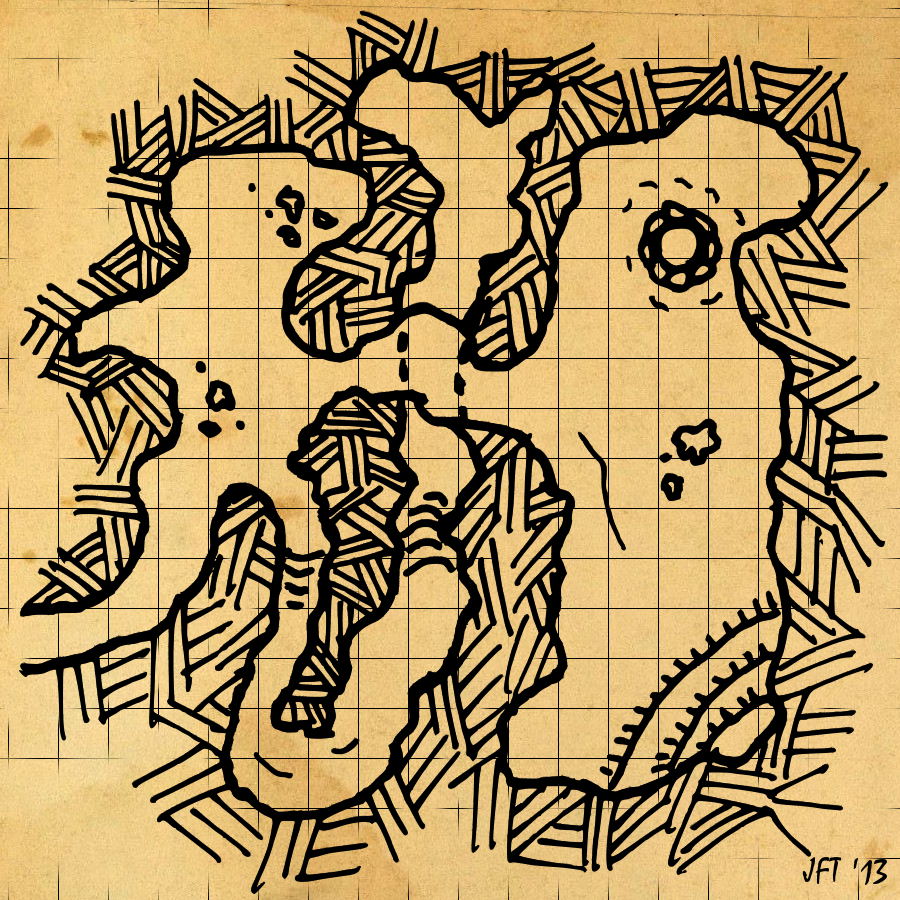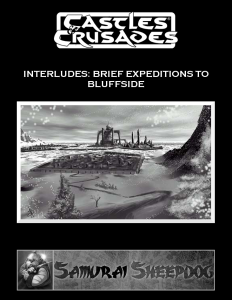 Today is Swords & Wizardry Appreciation Day. RPG blogs across the Internet today will be exploring Swords & Wizardry the RPG. What makes Swords & Wizardry stick out amongst the other “retroclones” other there?
Today is Swords & Wizardry Appreciation Day. RPG blogs across the Internet today will be exploring Swords & Wizardry the RPG. What makes Swords & Wizardry stick out amongst the other “retroclones” other there?
I was asking myself that same question when I first saw the formative plans of the S&W Appreciation Day over at Tenkar’s Tavern. In fact, two weeks ago I wasn’t even sure The Iron Tavern was going to participate. Then I remembered I had the ‘Swords & Wizardry Complete’ PDF I had received from the Reaper Kickstarter last year. Given I have been searching for a “default” system of choice for my fantasy games I decided to sign up and see what all the excitement was about.
While a lot of the blogs are going to be posting new content, house rules, and possibly even campaign settings for the S&W ruleset, I am going to look at Swords & Wizardry through the lense of a newcomer to the system. And how this S&W Appreciation Day may have led to the discovery of my new “default” system.
Swords & Wizardry – The Rules
Swords & Wizardry emulates the Original D&D game put out in the late 1970’s. The rules seek to stay true to that, though the organization of the rules is cleaned up to make them easier for consumption. My reading was based on the “Complete” version which also brings in some of the supplements to provide a pretty complete gaming experience without overwhelming you with rules.
Character sheets are simple, ability scores are rolled 3d6 in order. Though the rules do state if the game is to be a long-term game, the GM may let you assign your rolls to the ability scores you want. Any player of D&D will be quite familiar with the ability scores – Strength, Dexterity, Constitution, Intelligence, Wisdom, and Charisma.
The “Complete” version of the rules include several character classes to help give players a good selection to choose from. With the Assassin, Cleric, Druid, Fighter, Magic-User, Monk, Paladin, Ranger, and Thief all represented. Races are distinct from class, though not all character classes are available to all races.
The basics of gameplay is covered, though with large amounts of room for a GM to adjudicate decisions and play. Encumbrance, combat, turning undead, damage, death, magic, and more are all covered. Monsters are included in the “Complete” rule book to help populate those wildernesses and dungeons for your players.
The final item I want to highlight is that the rule system accommodates both ascending and descending armor classes. The original D&D rules used a descending AC as the method of making something harder to hit. After years of playing with ascending armor classes, going back to descending can sometimes be a difficult transition. S&W includes methods for both, which is great for people like me who might have difficulty going back to a descending AC.
Swords & Wizardry – The New Default?
As I noted earlier I have been looking for a new default system for the fantasy genre. I am a long time D&D player and greatly enjoyed my time with 3.5 and Pathfinder. I still enjoy a good Pathfinder game!
But as my free time grows shorter I keep leaning towards a rules-light system. Something I can pick up and go with when I find myself with an extra couple of hours. A system where we can gen up characters in 10 to 15 minutes instead of 30 minutes or more. A system where the adventures are minimal prep and a little easier to run on the fly.
During this process I have accumulated a large number of OSR systems in physical or electronic form. With all of them I have enjoyed the return to simple, the return to true creativity instead of rules dictating with authority what my characters can or cannot do.
With my recent delve into the Swords & Wizardry system I may have found my default. S&W takes everything back to the beginning. It gives you enough classes to get started without need to “homebrew” a lot more into the system yourself. And while I enjoy races as class, I am not sure I want that as my default system. So having that split out is a plus. Having the option for both ascending and descending armor class is also a positive.
As a friend of mine pointing out, one nice thing is that one can sort of mash different “retroclones” together to get exactly what you want. That idea appealed to me. S&W seems to give me the perfect base foundation to house rule bits and pieces from another “retroclone” in with ease. It starts with the basics, I can house rule in what I find interesting from the other systems I have been dabbling with with less fear of conflicting with the base system.
 Something else that makes the system especially attractive is the d20swrd.com site. I found the D&D 3.5 SRD sites invaluable, as I did the Pathfinder SRD site. They were convenient to do quick rule lookups from places where I did not have access to my books or PDFs. More importantly, for players new to the game it provided just enough information to a new player before they committed to picking up the books.
Something else that makes the system especially attractive is the d20swrd.com site. I found the D&D 3.5 SRD sites invaluable, as I did the Pathfinder SRD site. They were convenient to do quick rule lookups from places where I did not have access to my books or PDFs. More importantly, for players new to the game it provided just enough information to a new player before they committed to picking up the books.
Take a look at the d20swrd.com site. Everything a person needs at your fingertips in searchable form to play S&W. Having the rules available in this form online is a tremendous resource for current players of S&W and those just getting started.
S&W Is the One
At the moment it looks like Swords & Wizardry is what I plan to use as my default fantasy rule system. It starts simple and is rules-light. The “Complete” version is affordable, the d20swrd.com site makes it even more accessible. And the community is pretty active over on G+. Swords & Wizardry has a lot of things going for it. I do believe I have found my default system for fantasy RPGs!

